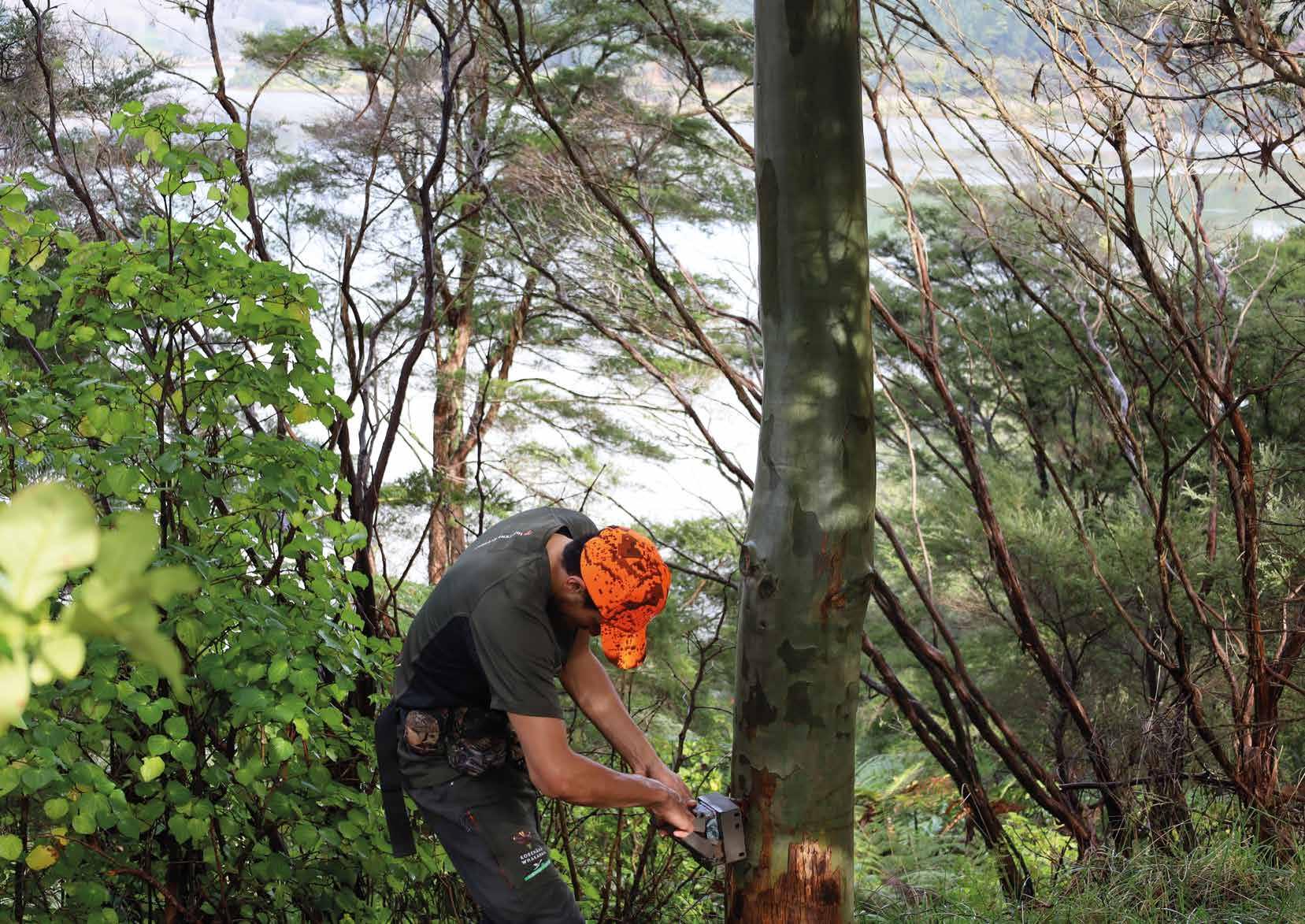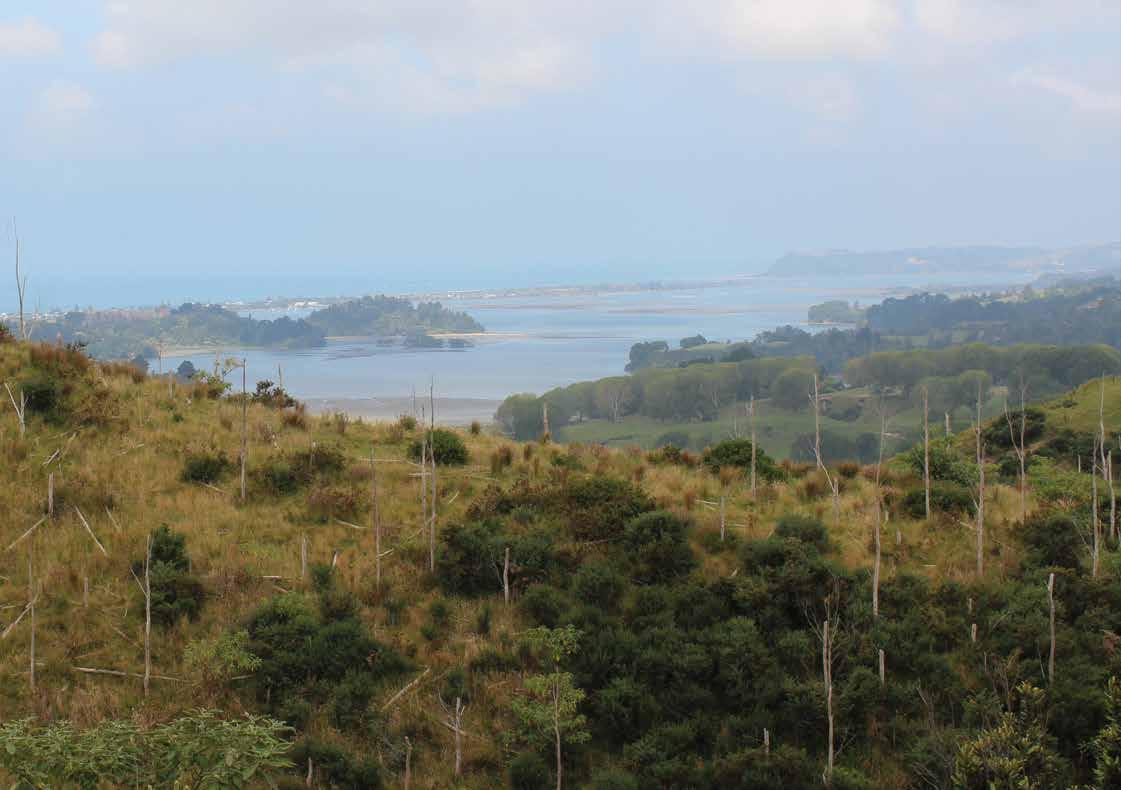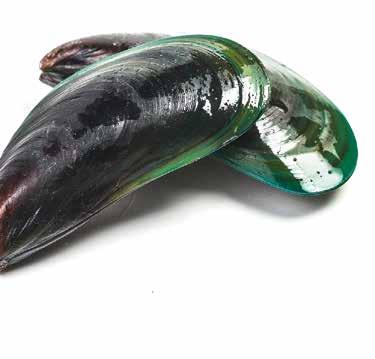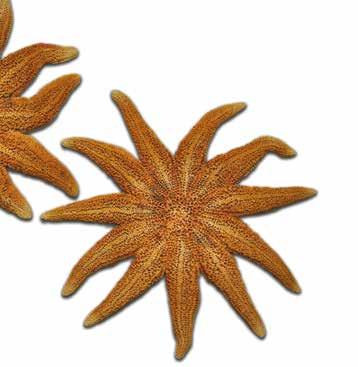
4 minute read
Annual Plan 2020/2021
Kaitiakitanga
Guardianship for future generations

HARBOUR BIODIVERSITY ON THE RISE AND STARFISH POTENTIAL

New findings of the mussel restoration project in the Ōhiwa Harbour, Awhi Mai Awhi Atu, show that the mussel spat lines produce positive results beyond their brief – to reinvigorate the harbour’s mussel beds. A recent survey of the four mussel restoration stations in the harbour by project leader Dr Kura Paul-Burke revealed that each mussel on the line is home to an average of 128 individual small species. Given that there are 2,000 mussels on each line on average this makes for a great biodiversity and helps rebuild what is called a mid-water community of sorts. Compared to the sea floor where small sediment cores have identified an average 6587 individuals/m², about 70x more microorganisms are found on the lines. These initial findings suggest the mussel lines may be a potential nursery habitat for a range of species. Juvenile snapper, parore and other fish were sighted in the mussel area. The lines also appear to contribute to mid-water biodiversity and estuarine foodwebs in the harbour, particularly when they are out of reach of starfish!

Starfish are still present in the harbour, including in the last original mussel bed. A newly funded project is tackling the problem. Pātangaroa hua rau: investigating the economic potential of collagen and bioactive compounds which could be extracted from starfish. If this was found to be commercially viable, harvesting could help to manage over population in Ōhiwa Harbour.
The project is funded by the Ministry of Business Innovation and Employment, National Science Challenge Sustainable Seas Innovation Fund. It is based on a collaboration of Te Rōpū Kairangahau (representatives from Te Rūnanga o Ngāti Awa and Te Upokorehe), Cawthron Institute, Waikato University, and Plant and Food Research. The project compliments the Awhi Mai Awhi Atu project. Any financial returns of a potential product are intended to be returned to the harbour to help manage the long-term management of pātangaroa/seastars. PĀTAKA IKA: DEEPWATER PĀTAKA
Prior to COVID-19 the pātaka system was a way to utilise commercial vessels for customary catch, transferring it to freezers in order to provide for tangihanga and large hui when the need arose.
When the country went into lockdown and people were confined to their homes, pātaka ika quickly became an important resource for Iwi and Hapū collectives around the motu, as they mobilised to support whānau in their communities. It was an unprecedented situation with some of the strictest regulations we’re likely to see in our lifetime and yet in seems the pātaka system was designed for this unusual environment.
In the COVID-19 lockdown last year Ngāti Awa set about obtaining pātaka ika to distribute to Kaumātua. This was followed up during the Whakaari incident where pātaka ika was accessed to help feed our manuhiri and whānau.
“In the old days people would take several days off to go fishing to supply the tangi, but people just don’t have the time anymore”.
Whether it’s a change in people’s lifestyles, the weather or emergency situations like COVID-19, pātaka ika provides another means to ensure access to Kaimoana in times of need. NZ FISHERY REGULATIONS
New Zealand is considered a leader in fisheries management under a property-rights system that is unusual worldwide. NZ’s fishery policies are based on the Fisheries Amendment Act 1986 that implemented the quota management system (QMS) and the Treaty of Waitangi Fisheries Settlement Act 1992, which formally recognised Māori Customary, non-commercial fishing rights and rights to manage their fisheries. This guaranteed Māori 10% of quota for existing commercial fisheries placed in the QMS, 20% of any new fisheries brought subsequently into the QMS and 50% of Sealord Products LTD.
In this regard, NZ is in the forefront of the property rights granted to its indigenous population, Māori. The Deed of Settlement 1992 and related legislation not only provides formal property rights but recognises the customary fishing rights and management practices of Māori due to their long-standing and cultural participation in the fishery.
The property rights held by Māori under the Treaty of Waitangi (fisheries claims) Settlement Act 1992 that make them unique, as well as the rights held by other fishers within the QMS, are at risk from:
Proposed expansion of large Marine Protected areas (MPA’s), beyond those under the Marine Reserves Act 1971, in order to provide ecosystem-based fishery management. These large spatial reserve areas installed unilaterally undermine property rights to existing and new fisheries as well as customary access and management by Māori. Their implementation does not recognise the actions taken by Māori or other QMS quota holders to safeguard the marine environment.
Gradual effective reduction of Māori quota within the Bluefin tuna quota management system through reallocation to the unregulated sports fishing industry. UNREGULATED GROWTH OF SPORTS FISHERIES
The unregulated growth of sports fisheries presents a direct threat to the property rights held by Māori under the Treaty of Waitangi (fisheries) Settlement Act. The gradual reallocation of Māori fishing rights to new fisheries is inconsistent with the guarantees of the Deed of Settlement. As sports fishing fish mortality rises, the basis for quota as a property right is weakened as is the incentive for fishers to adhere to it.
No reira, kia mataara tatou. Charlie Bluett Customary Fishery Manager









